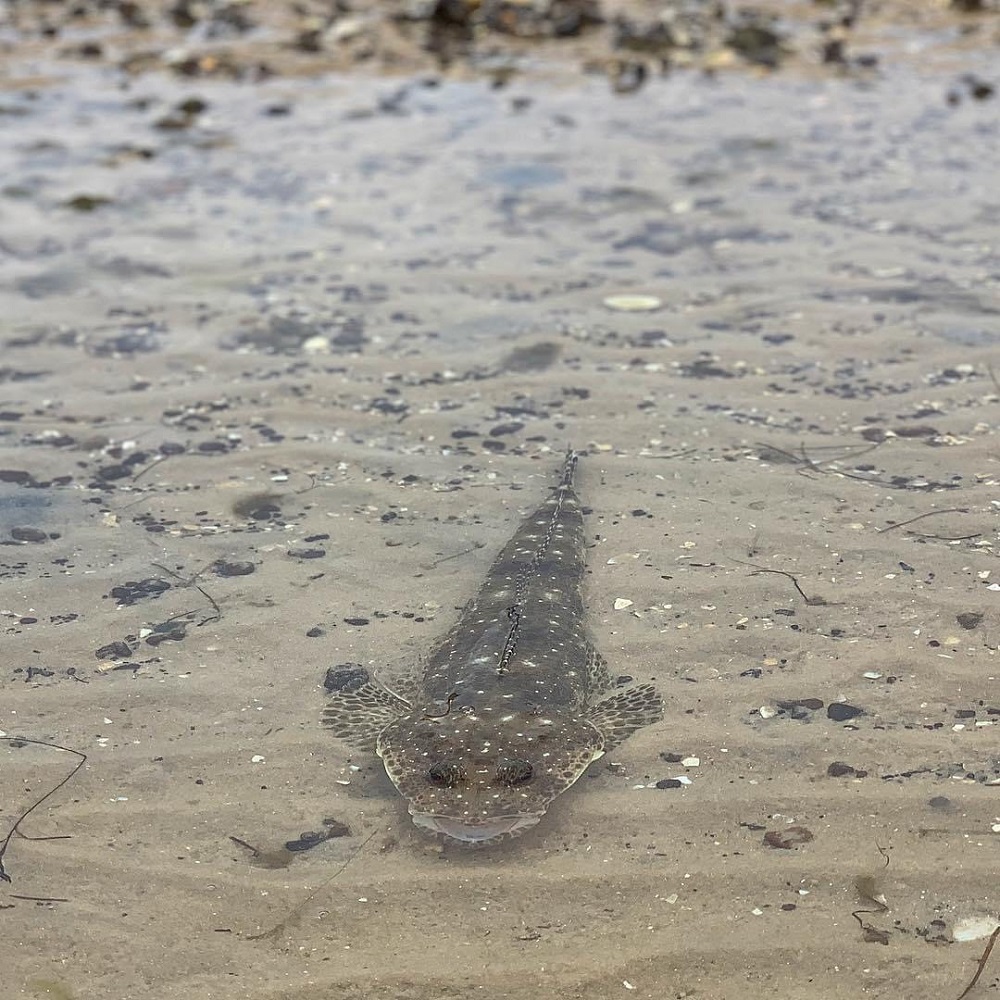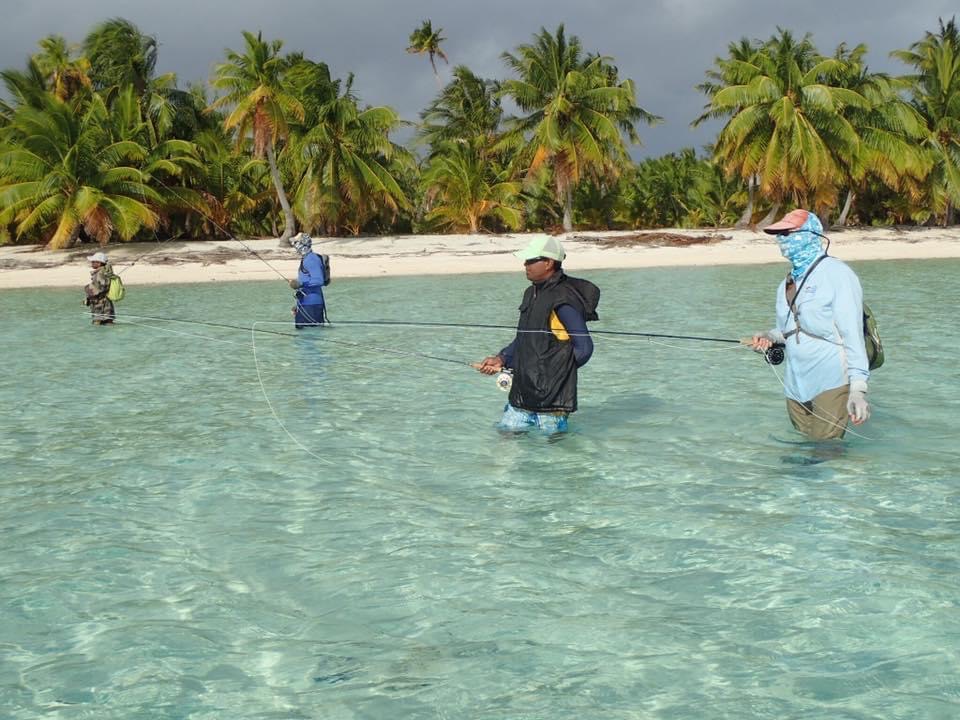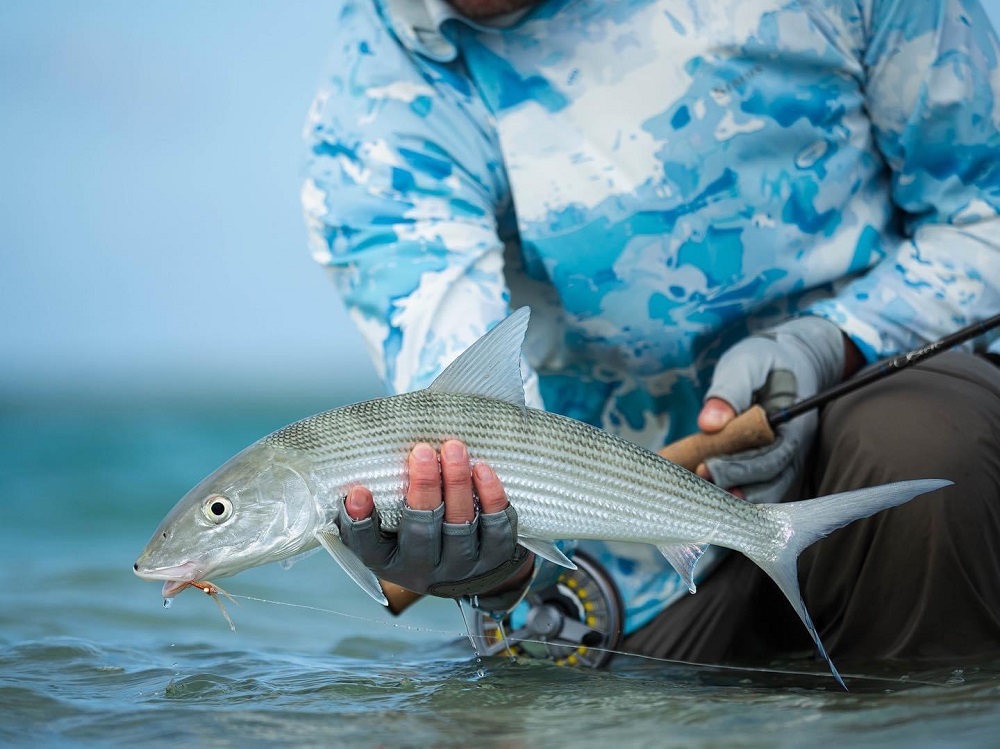
Scott advocates for a bit of salt with your trout.
Flyfishing has always been synonymous with trout. The two go together like peas and carrots, bangers and mash, lamb and mint sauce. You get my drift. Shortly, however, I want to put something a little salty on your plate.
Trouty beginnings
First, I should point out that I began my flyfishing journey almost thirty years ago. The water was clear and flowing fast on the upper Murray, with trout rising on evening. It was everything a budding flyfisher imagined this exciting new craft to be. From the age of twelve, it would come to dominate my life, immersing me in the world of flyfishing for trout: tying flies, the entomology, finding new rivers and lakes, and reading the water. During these formative years, I knew the release dates of all the local and international flyfishing magazines and would be at the newsagents, pocket-money in hand. Most of these publications would have a section on saltwater flyfishing, which I thought of as the ‘skip pages.’ Being a bit of a trout snob, why would you want to catch a saltwater fish on fly? It was just glorified lure fishing, wasn’t it? So, for many years I remained ignorant of saltwater flyfishing and continued to flip past these articles.
Why was I so ignorant? Maybe it was the gaudy flies, or the apparently cumbersome rods. Or perhaps it was growing up in Victoria, a state renowned for refined and sophisticated trout fishing. As this former trout snob reflects, a misspent youth on rivers and lakes has left me with very few regrets, but not casting a fly on saltwater earlier is definitely one of them.
Let me take you on an adventure as we talk saltwater flyfishing: exploring locally and abroad, simplifying the gear, and whetting your appetite for something different.
Saltwater sight-fishing
There is misconception amongst trout anglers that saltwater flyfishing is just throwing out large, colourful flies and stripping them aimlessly through huge bodies of water, relinquishing the satisfaction of the hunt. In fact, I have felt the same bittersweet frustration at a last-moment rejection from a stalked Western Lakes brown trout, as I have from a huge trevally on the coral flats of Anaa Atoll.
Seeing a fish before making the cast is sure to get any angler’s heart pumping. While I once assumed that saltwater flyfishing involved lots of blind casting, it turns out sight-fishing also translates, with many good-looking saltwater species waiting to be spotted, oftentimes more readily than the mysterious trout.
My first encounter with a giant trevally was on the shallow saltwater flats of Kiribati (Christmas Island). We spotted the fish about 60 metres away, smashing baitfish in a shallow bay. By the time we got to a casting position, my guide and I were both down on one knee, keeping a low profile – just as you would for a large brown on a backcountry river. I was using a surface popper fly to draw the fish’s attention. The cast was made to our sighted target, which followed the fly almost to the rod tip. In fact, the huge GT ended up so close that the leader join was at the rod tip and I was unable to retrieve anymore. All I could do was leave the fly floating motionless, as if it were an enormous dry fly on a lake. The trevally ate it off the surface like a supersized dun feeder on Lake Wendouree taking a mayfly.
But what happened next is where trout fishing and saltwater fly are seas apart. Within seconds of me setting the hook, that GT that was on the backing. A minute later, the backing was heading out into the blue horizon, at least a hundred metres away. What followed was an unforgettable battle that lasted for a good half hour. I can count how many times I have been on the backing with trout, but it is a regular and exciting occurrence in the salt.
Variety
When you are out saltwater flyfishing, you generally have a target species in mind, though unlike with trout, you never really know what else may show up. You could be out wading an estuary flat in search of bream, slowly scanning with your polaroids, when bang! … a nasty school of 3 pound salmon come rolling though, smashing up baitfish and causing a huge commotion. With a hookup on every cast, your slow and steady fishing just turned into an epic hour on the surprise intruders.
After getting a few years of saltwater flyfishing under my wading belt, and with a decent calamari fishery just down the road in Port Phillip Bay, I decided I would have a crack at this strange creature from the sea, on a fly. After a few designs which involved gutting a squid jig for its crown-like hooks, we hit the shallow weed-beds and landed some decent squid on our new pattern. Not only were they satisfyingly sight-fished, they were also great on the dinner plate that night.
Versatility
It isn’t just the sight, fight and surprise of saltwater fishing which will have you hanging out for more, but the fun is guaranteed year-round as the water quality seems to be more consistent than in the fresh. When your favourite river may be too low in the height of summer, or dirty due to a recent downpour; or your favourite lake in the middle of winter has just shut off and the fish seem to be hibernating, it’s likely to be a great time to hit the salt. You can always seem to find clear water, even after a rain event. And tides are predictable, so you can work around them and find the best bite period.
The fun can be shared too. With plenty of room for a group of mates on a beach or wading a flat together, there’s usually plenty of entertaining banter. Alternatively, if you enjoy the solitude of fishing, wandering up a secluded estuary through the native Australian bush, sight-fishing bream in the early morning, is the perfect option to get away from it all.
You can certainly open up a worm-hole to another flyfishing universe when you decide to try the salt. And one thing’s for sure, it is a hell of a lot of fun!
The gear
Yes, I hear all you trouties, “I already have too much gear! Now I have to head out and buy a heap more to cover the salt? My partner is going to kill me!” Let me save you a night in the doghouse. Most of us already have a 6 weight outfit we use for our trout and that is a perfect place to start. All you really need now is a bunch of saltwater flies that mostly consist of baitfish, crab and prawn imitations. A dozen is all you need to get going. Visit a local fly shop which knows their saltwater flies, tell them where you plan to head, and get them to select the right flies for your intended target species. It’s that simple!
Then, if you do get the bug (and your domestic relationship is up to it!), you could invest in a dedicated saltwater outfit. If you plan on fishing pretty much anywhere on the east coast of Australia (and even a number of destinations up north) grab a fast action 8 weight. This is the perfect weight to cover most species, and if the wind kicks up, which it tends to do, you will be glad you had the heavier weapon.
When it comes to reels, like rods, the sky is the limit with price. Keep in mind that unlike your trout reel, you need something with a little more guts in the drag system to manage that fish of a lifetime. Look for a reel that has good seal to keep out that nasty saltwater. Throw in 250 metres of braided backing and a slightly aggressive tapered floating fly line. To turn over slight larger flies, a saltwater leader, from ten pound to twenty pound, will have you covered. With that outfit, you’re also set for that bonefish trip of a lifetime when it comes time to travel outside Australia again. (More about this shortly!)
Local fisheries
Okay, this is where I get a little bit excited about saltwater flyfishing. Most of us live within a couple of hours of the saltwater, whether that be a bay, an estuary, or the open ocean. So saltwater flyfishing is very accessible for most of us, and critically underused by most flyfishers, particularly anglers in the south of the country. For those southerners like me, we have a fantastic bream fishery in most estuaries; even the Maribyrnong River in the heart of Melbourne. The Gippsland coast and west along the Great Ocean Road, are also great areas to explore and offer endless estuaries, bays and flats for bream, estuary perch, flathead, salmon, silver trevally; even tailor and the squid I wrote about earlier.
Speaking of flathead, these are another ideal species to catch on the fly that inhabit most of the waterways around Port Phillip. The best areas to hunt these fish are the gutters on the shallow flats. Port Phillip also has one of the best runs of snapper in the months of spring and summer: a fairly underrated and under-fished species on the fly. It could be argued “The Bay” has potential to be a world-class snapper fishery if the time was spent chasing these hard fighting fish – as a few flyfishers already do.
Sydney also offers excellent saltwater flyfishing with most of the species already mentioned, plus famously hard-pulling kingfish. Most people who have fished a ‘kingy’ bust-up will testify how much fun they had hooking up to these beasts.
Further Afield
It’s winter in Melbourne. It’s cold, wet and windy and after three months, the lack of vitamin D is making you a little depressed. Why not consider a trip up north, or across to Western Australia chasing some warm-water species. Barramundi, queenfish or the elusive permit are all on offer. A week in the warmth, catching some hard-hitting fish while soaking up some sun, is the perfect antidote to the winter blues.
International
It was six years ago that I first headed off to Kiribati (Christmas Island) with my work buddy, Russel from The Flyfisher in Melbourne. I clearly remember the anticipation as we prepared for the trip. Learning that these speedsters can clock 70km/h when hooked, compared to a trout’s maximum speed of around 25km/h, really excited me. In several conversations with Russ in the lead-up to this trip, I told him bone fishing was on my bucket list. I had to tick it off and it would be just this one trip. Russ laughed and said, “It won’t be your last trip to Christmas Island, it will be your first of many.” He was speaking from experience, as that trip would be Russ’ third. In fact, he had already vowed to return every year till the day he died. Before that first trip, I couldn’t understand why you would go back to the same destination, for the same species, so many times. Now after six trips to Christmas Island myself, plus various saltwater expeditions to other off-the-grid islands, my addiction to bonefishing and warm-water saltwater flyfishing is complete.
Hosted Help
While there are a stack of options when heading overseas fishing, I would suggest your first adventure be a hosted trip, with a reputable company that has a good understanding of the fishery and a good background in saltwater flyfishing. A hosted trip takes the guesswork out of the fishery, the lodgings and the guides. A good host will be able to iron out any problems you encounter on your trip and they’ll also carry some spare gear in case your gear fails you.
As you can probably guess, I’d rate Christmas Island as a fantastic option for that first international saltwater fly trip. It is a remarkable fishery, offering ample shots at bonefish, as well as the opportunity to encounter many other species, including giant trevally. After hosting several trips myself, one highlight has been watching the group form bonds which lead to great friendships back home.
 Expect your gear to get a bit of a workout if you head to northern Australia or the Pacific islands.
Expect your gear to get a bit of a workout if you head to northern Australia or the Pacific islands.When people are considering their first big flyfishing trip overseas, they often ask me, “Scott, where would you choose between Christmas Island or New Zealand?” My choice is always Christmas Island as it will truly change your life. You go there for the fishing but fall in love with the people and the island. Then I always point out that New Zealand is really just another state of Australia, only the people have terrible accents. So it’s easy to justify both trips!
Make a start
You don't need to head out and buy an 8, 10 and 12 weight fly rod and burn all your trout gear; saltwater is just another arrow in the quiver. It is a heap of fun to mix it up and taste something a little different.


















